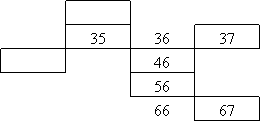Instructional Accommodations for Use in the Classroom
![]()
A strategy for helping a student with writing:
If a student is having trouble writing detailed stories, or tends to write paragraphs as if they are entire stories, you can try a strategy that I developed while working with one such student. This strategy is meant as a way to have the student become an autonomous writer and should not be used continuously, but rather be phased out as the student progresses.
Begin by having the student write a story of any length. Let's assume that he/she wrote the following story:
I went the the park. I played with Drew. We got bored and went home. It was a long day.
After reading the story ask the student questions about missing details such as: What kind of day was it? Did you go with Drew or was he already there? What did you play? Why did you become bored? What makes you say it was a long day?
After asking these questions and conferencing with the student, copy the sentences on a new piece of paper, leaving space after each one. Ask the student to get from each sentence to the other, adding as many details as possible.
For the first few times this part may need to be done with teacher supervision, though the goal is for the student to eventually be able to locate logical breaks and add the details him/herself.
-------------------------------
Teaching a Range of Learning Styles in a Social Studies Lesson:
The classroom I taught in had an extremely large range of learning styles and differences. What this meant for my teaching was that I always had to be aware of how my lessons could reach all of my students, challenging the gifted ones yet accommodating those who struggled. One way in which I worked with these differences was when I assigned the Countries of the World Project.
Students were assigned a country based on their own preference, but also on the reading level of the books available for research. I wanted to make sure that my gifted students worked in a research book that met their own reading needs while my LD students had books they could extract information from without too much of a challenge. Additionally, I was more lenient in the requirements for my student with Asperger’s, for he tends to structure his writing in an extremely sequenced manner, going so far as to number his sentences. For this reason I was not requiring him to add as many pictures to his poster, nor did I require him to use a varied sentence structure in his writing, especially since my main goal was to have each child personally satisfied with the final product.
After seeing the final projects I was pleased to see that all of the students really did enjoy the work and learn something from it. I think that not only catering the reading to their level, but also playing off of their own personal interest in a specific country allowed the students to really invest themselves in their work.
-----------------------------
Helping Teach Division using Arrays:
In the Everyday Mathematics program the students were asked to solve division problems without any strong division background. For this reason we needed a simple way to explain the concept to the children so they could solve division problems. If you need a way of teaching division that is student friendly and very accessible to visual learners, try this:
First make sure that students understand how to make an array (a series of dots in rows and columns) from a multiplication sentence. For example, that 4 x 3 would have three rows of four dots or four rows of three dots. They could then count the dots to find the total, or the solution to the problem 4 x 3.
Next ask them the question what is 15 / 3, or how could we make three equal rows using 15 dots? See if they can begin by making one column with three dots, signifying the three rows that you need. Next have them begin the second column of dots, starting at the number 4 and counting to 6. Have them continue making rows and counting their dots as they go until the reach the number 15. When they have 15 total dots, ask them to count their columns - 5 - this is the solution to the problem 15 / 3.
---------------------------
Teaching Students to Complete Number Grid Problems
Two of the students in my class were classified with learning disabilities and were struggling with the concept of completing number grids. They were given a problem such as the following and asked to fill in the boxes, using the rules - left = -1; right = +1; up = -10; down = +10; diagonal = either + or - 9 or 11 depending on the direction.

These two students in particular found it nearly impossible to understand this system and struggled the most when moving diagonally. This meant finding an alternative method of solving the boxes.
First I helped them remember the basic rules for moving up, down, left and right using a compass rose style image with the rules on each directional point. Next we suggested that instead of moving diagonally, that they think of it as moving up first and then left, or down and then right, or right and then down, etc. This removed the adding and subtracting of the numbers 9 and 11 and allowed them to use only 1 and 10 for counting.

------------------------------------